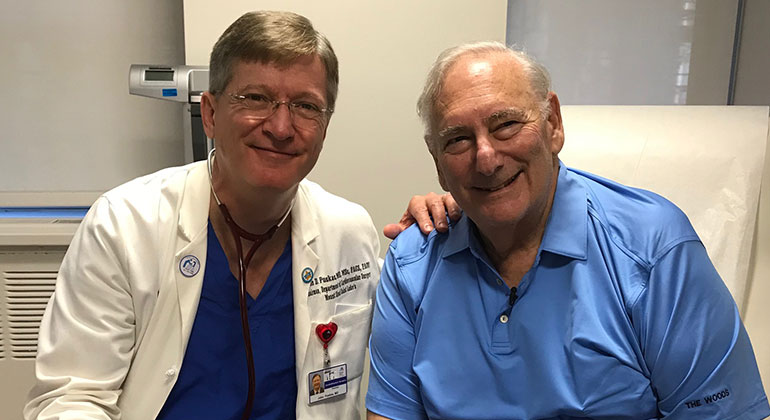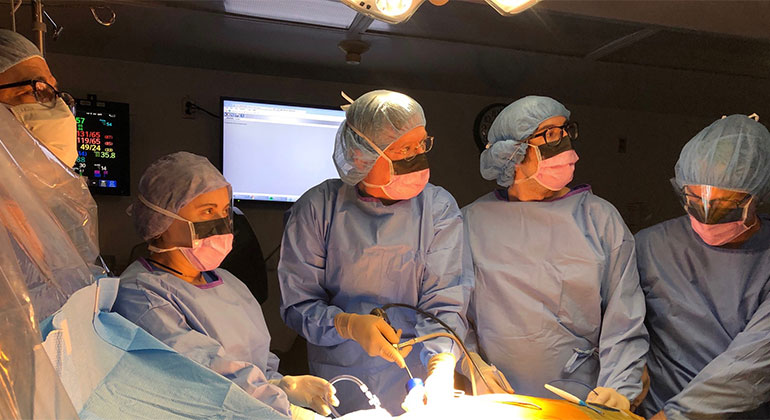

Quick Recovery After TECAB, an Advanced Heart Procedure
Skip Vichness, 71, thought the pain radiating from his left shoulder down his arm was due to sleeping in a bad position. The discomfort was persistent, so while at a weekend birthday party for his grandson, he asked his daughter-in-law, a cardiology nurse at The Mount Sinai Hospital for the name of a cardiologist. She knew immediately the situation was serious and insisted Skip make an appointment for an urgent visit with Joseph M. Sweeny, MD, Director of the Lauder Family Cardiovascular Ambulatory Center of Mount Sinai Heart.
The day after seeing Dr. Sweeny, Skip went through a series of tests, including an angiogram at The Mount Sinai Hospital. Dr. Sweeny discovered that Skip had two blockages and wanted Skip's surgery to be performed by Dr. Puskas. Dr. Sweeny wanted Skip’s surgery to be performed by John Puskas, MD, Chairman of Cardiovascular Surgery at Mount Sinai Morningside, Mount Sinai Beth Israel, and Mount Sinai West.
Dr. Puskas’s plan was to perform a highly technical procedure known as totally endoscopic coronary arterial bypass surgery (TECAB). The surgery is performed using only micro-incisions and offers eligible patients a much quicker recovery and less pain and risk of infection because the procedure is performed without making any cuts in the breast bone and there is no rib spreading. In this procedure, advanced equipment and a very special robot are used to perform the coronary bypass procedure. Dr. Puskas, a world-class expert in using robots for coronary bypass procedures uses two arteries in the chest wall to bypass the heart blockages. These arteries allow for much longer-lasting bypasses than those using veins, which often re-clog in about 10 years.
On a Friday morning in June, Skip underwent a very long but highly successful heart surgery. Five days later his drainage tubes were removed, and he was feeling good; no pain medication required. The following Thursday, he was watching the basketball playoffs with hospital staff coming in to check in on him—and the game. The next day, after walking the halls and having an X-ray, he got the green light for discharge. Skip was ready to begin a walking regimen and supervised workouts with his personal trainer. By the beginning of August, he was 100 percent and back on the golf course.
“We are proud and excited to have successfully performed this advanced coronary procedure at Mount Sinai Morningside,” says Dr. Puskas. “We can now offer this less painful procedure with easier recovery for patients with severe coronary heart disease.”
Skip says he owes a debt of gratitude to the entire Mount Sinai team. “They treated me so well; I do not take their work for granted.” He adds, “Dr. Puskas is an amazing human being—caring, gentle, and passionate about his patients.” Skip is now very happy to be giving back: There are few surgeons who are capable of performing the endoscopic robotic technique, so Skip is sponsoring two fellows who will work with Dr. Puskas to learn it.
To read more, visit CBS New York.